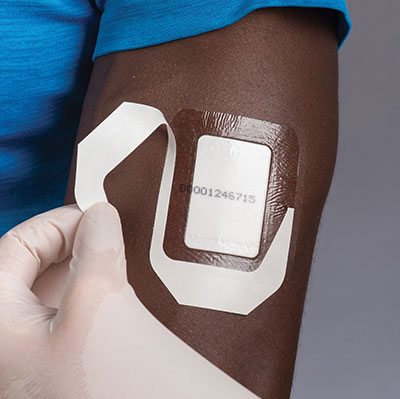Researchers in South Korea have developed a wearable sensor-based technology that will easily detect the presence of drugs in a person’s sweat. This technology has been developed by using nanomaterial techniques which tend to amplify optical signals of narcotics in flexible and body-worn materials.
Drug addiction is a serious problem that continues to grapple mankind while afflicting irreparable damages to human lives. Often sportspersons, athletes and celebrities get mired in controversies around the illicit use of drugs. Recently, some researchers in South Korea have developed a wearable sensor-based technology that will easily detect the presence of drugs in a person’s sweat.
This technology has been developed by using nanomaterial techniques which tend to amplify optical signals of narcotics in flexible and body-worn materials. The research has been led by Dr. Ho Sang Jung of South Korea’s Korea Institute of Material Sciences.
At present, various drug detection methods are quite complex in extracting drug components from biological specimens like hair, blood and urine. Under this process, the samples are analysed through gas and liquid chromatography mass spectrometry. This process is usually time consuming while it also requires larger rooms along with access to high-level equipment and labs with skilled technicians.
Wearable sweat-based drug detection tests
The wearable-based technology works on sweat absorption method. When the body perspires, sweat droplets come out on the outermost layer of the skin. These sweat patches remain attached to the body which then irradiated through light for testing and detecting the presence of drugs and related substances in the body. The process established can easily be performed within a minute and requires minimum additional process.
Every then and now, controversies erupt on the news of doping done by athletes to enhance their performances. In many cases, anti-doping tests are being conducted through urine and blood. But then it is argued that blood tests may affect an athlete’s performance while urine tests are said to be in violation with human rights.
That’s why wearable sweat-based tests which are non-invasive and free from such issues can be considered as a reliable and advanced form of rapid testing pertaining to drug detection. They are mostly based on small amounts of discharged sweat while utilising a highly sensitive sensor technique to find the presence of drugs.
The Raman Effect – Technique behind drug detection
The wearable sensor detects the amount of drug in the sweat patch through a highly sensitive surface enhanced by Raman scattering technology. This technology deals with the change in wavelength of light when it is deflected by molecules while traversing from one point to the other.
While the light travels, a small fraction of light happens to follow the direction other than the incident light. As a result, this small portion of light tends to have changed wavelengths different from the maximum amount of travelled light. This occurs due to a phenomenon known as Raman effect which was named after an Indian physicist CV Raman. This effect further strengthens the signal of chemical substances. As a consequence, it becomes possible to detect the substance and identify the presence of drugs.
Functioning of the wearable sensor
Apart from the technical process involved in it, the researchers have also developed the cocoon protein which is a flexible and wearable material to make optical sensors. Then a silk solution which is a natural protein is extracted from silkworm to make 160 nanometre of thick film.
The film is then attached to 250nm of thick silver nanowire and is transferred to a medical patch which is finally attached to the skin. Once the patch starts absorbing the sweat, the drug, if present, starts percolating to the sensor and reaches nanowire. There the irradiation of light through Raman laser technique detects the presence of drug on the patch in real time.
Menace of drug abuse in India
The problem of drug abuse is quite severe in India where big drug cartels operate with utter impunity across the large swathes of the country. According to a report by Delhi’s AIIMS National Drug Dependence Treatment Centre, there are over 63 lakh people in India who are addicted to heroin while 25 lakh people suffer from the addiction of pharmaceutical opioids. In addition to this, there are around 50 lakh people in the country who are addicted to cannabis along with 40 lakh people who consume bhang as a regular habit.
Overall there are 5.7 crore such cases who have serious concerns regarding the toxic addiction to alcohol and drugs. Although experts believe that actual numbers might be quite high. Recently, a huge controversy sparked tensions in the film industry where renowned celebrities came under the ambit of investigation of Narcotics Control Bureau in the country.
The addiction of heroin is the biggest concern in India. Also experts suggest that catching small and petty drug users will not solve the problem until and unless the big smugglers are caught. Besides, a brutal police crackdown will only aggravate the situation of drug pedaling as what happened in the US. The country’s ‘War on Drugs’ eventually led to a massive rise in the street prices of illegal drugs while there was a dramatic increase in the smuggling of more deadlier drugs and illegal activities associated with it.
Recent reports also hint that the tendency of drug addicts is growing towards the usage of psychoactive drugs which are factory processed and are made from chemicals rather than using plant based substances with low-potency.
To tackle the problem of drug abuse, Portugal seems to have the most progressive provisions. The administration in Portugal did not arrest any addict if they are caught using drugs. Instead, these addicts are sent to counselling and well-being centres for proper training of drug addiction mitigating techniques. With that, they are also provided with mental health care support.

